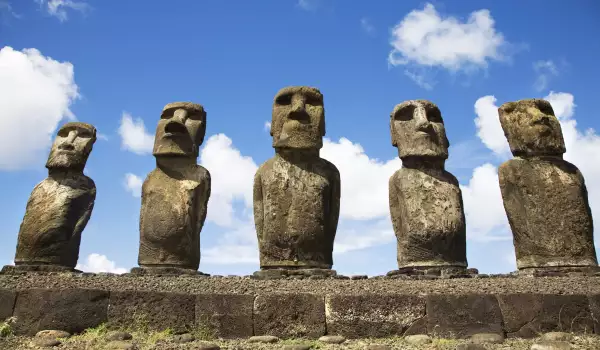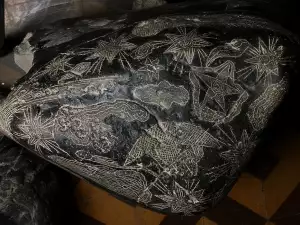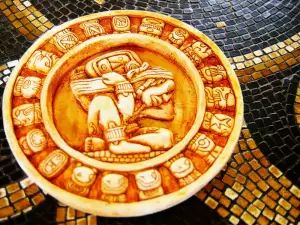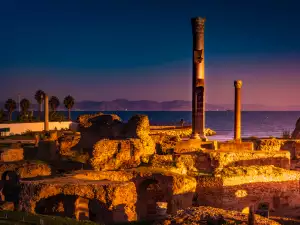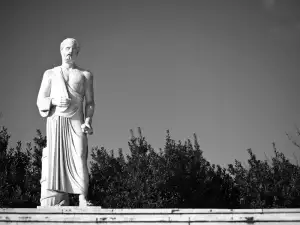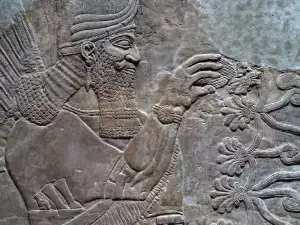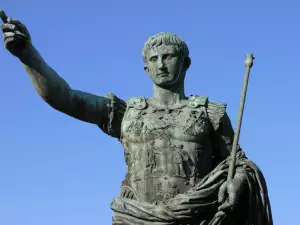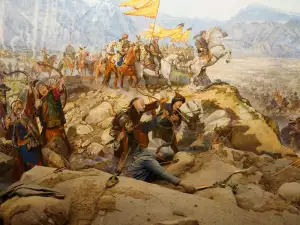Everybody knows about the Egyptian pyramids, Stonehenge, and other historical mysteries. But there are others who have long been forgotten, and some most people have not even heard of...
This is the city of Helike described by ancient Greek writer Pausanias. He described the destruction of the city, which crashed to the ground by an earthquake in one night. Whatever survived was swept away by a tsunami. The city would remain only a myth if in 1861 was not found a bronze coin with the crest of the city - the head of Poseidon, and then was found the whole city.
Another puzzle is Rongorongo. Easter Island has long been a mystery to scientists and hieroglyphs painted by natives of the region called Rongorongo. Boards with mysterious inscriptions were discovered in the eighteenth century and are still not solved.
Yet no scientist has revealed the secret of the bodies from the marshes. It's hundreds of bodies buried in bogs in northern Europe. Before being buried, people were tortured and murdered, most likely to sacrifice.
The reason for the collapse of Roman Empire is not yet completely solved, but Minoan civilization is an absolute mystery. Minoans lived on the island of Crete, known for its labyrinth and the Minotaur. The end of their civilization occurred after the eruption of a volcano on the neighboring island of Tyre. After the eruption, Minoans survived, but disappeared.

Stonehenge is still a mystery, but the same can be said for the Carnac Stones that are arranged in straight rows in northwestern France in the commune of Carnac. There are three thousand megaliths that are arranged in perfect lines and stretch for twelve miles.
According to legend, the wizard Merlin, known from the legends of King Arthur, made the stone rows from marching Roman legions. One theory, however, is the stone rows were kind of an earthquake detector.
Complete puzzle is the story of a Roman legion. After the Roman general Crassus was defeated by the Parthians, a handful of his soldiers roamed the desert until they were surrounded by the Chinese army.
Chinese historian Ban Gu, who lived in the first century, describes a battle with a strange army that fought in flakes like fish - it was characteristic only of the Roman army. It is believed that those who survived, founded the village Litsyan, in the Gobi Desert. This might explain the green eyes and blonde hair of Chinese from the village.
Tarimian mummies, which are two thousand years old, were discovered during excavations in Tarimian basin, in western China. Some of them had long noses and light hair. It turned out that they are Europeans. In ancient Chinese texts lie references to representatives of the European race, but no information on how they could ever end up in China.
Collapse of the civilization of the Indus Basin is also a great mystery. The earliest civilization of India were residents of the Basin of Indus River. Their dominions stretched from Western India to Afghanistan and its population was about five million people.
Their disappearance can be compared with civilization of the Mayans. In 1922 archaeologists discovered settlements inhabited by this civilization, with sophisticated systems of drains and bathrooms. This civilization, however, had no army, slaves, and social conflicts.
